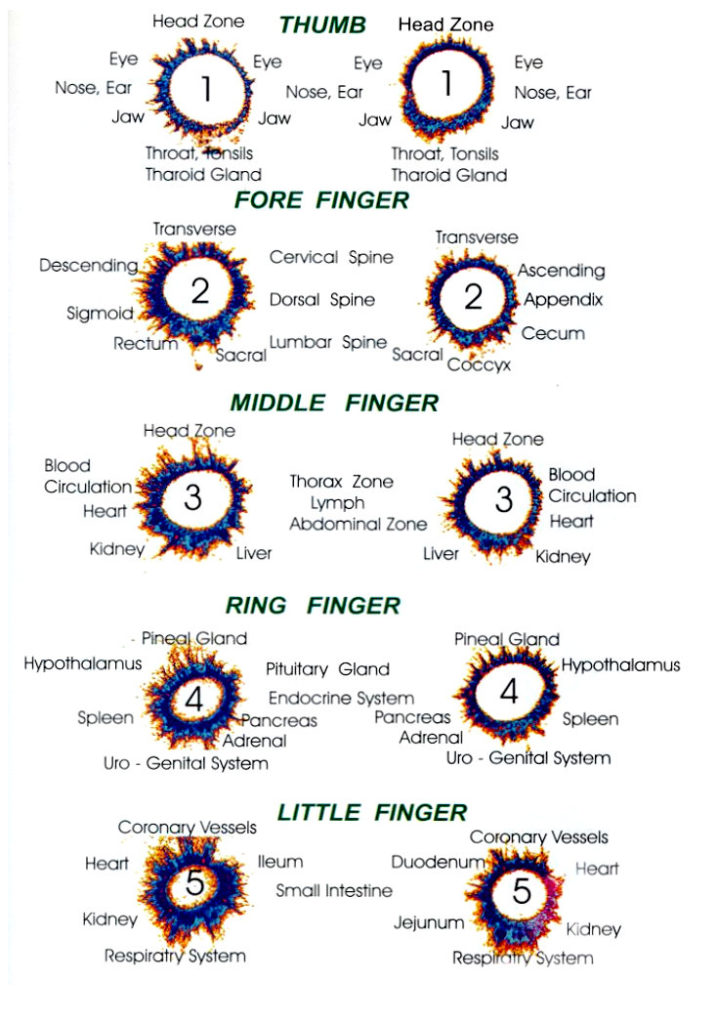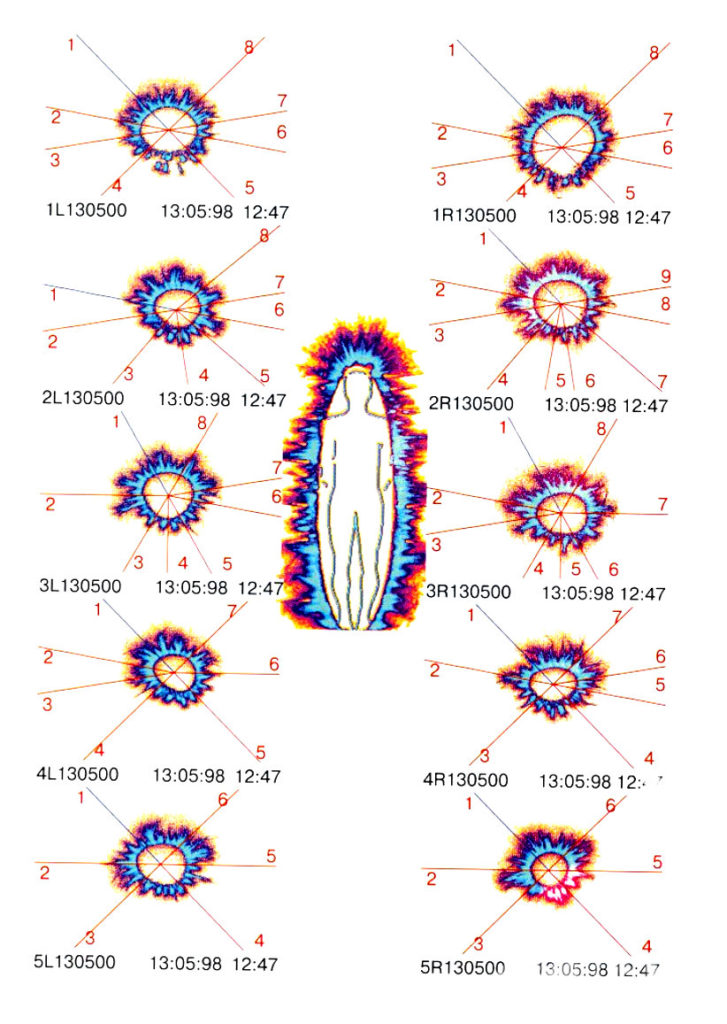SCIENTIFIC ANALYSIS OF THE HUMAN AURA
Beverly Rubik, Ph.D.
Institute for Frontier Science
Oakland, California
INTRODUCTION
The dominant biomedical paradigm that is the foundation of conventional Western medicine has had only limited success. Its Human Genome Project showed that less than 40,000 genes make up a human being (Claverie, 2001), even less than the number of genes in a grain of rice. Some key scientists question whether this approach is sufficient to account for all the information in a human being (Strohman, 1993). Additionally, this paradigm is very limited toward understanding healing and the modus operandi of many types of alternative therapies.
On the other hand, a new scientific worldview is emerging from biophysics. Based on chaos theory and quantum mechanics, the biophysical view of life focuses on its matrix of energy and information. Although the dynamics of these are very complex and often difficult to measure, work in this area is yielding insights into a subtler dimension of life.
Many lines of scientific and clinical evidence show that extremely tiny energetic stimuli to injured or sick organisms can promote healing.
Homeopathy, biofield therapies, acupuncture, and bioelectromagnetic therapies—various types of energy medicine —demonstrate that tiny nudges, repeated over time, can shift the dynamics of the organism,
nudging it into a healing state. These changes may be lasting after the stimulus is withdrawn. This is the basis of energy medicine. It is distinctly different from the approach of conventional medicine, which focuses on modifying the structure and/or biochemistry of life.
In relation to this, consider that virtually every indigenous culture has held a form of vitalism, the belief in a vital force or life energy. There is the concept of qi in China, ki in Japan, prana in India, and it goes by many other names worldwide. It is possible that all of the indigenous systems of medicine were founded on the principle of a vital force, and many of these medical systems remain outside of mainstream Western medicine today. In any case, vitalistic principles are key to many contemporary alternative systems of medicine, including homeopathy, chiropractic, Oriental medicine, Ayurvedic medicine, Anthroposophical medicine, and others.
Presently we have no such concept of a vital force in science or allopathic medicine, which was eradicated long ago from a mechanistic biology.
Medical historial Harris Coulter describes the 2,500 year-old struggle between the vitalists and mechanists in their healing philosophies (Coulter, 1994), which still remains as the battle between alternative and allopathic medicine continues.
It is the author’s goal to introduce an energy field concept consistent with
contemporary biophysics, which builds a bridge from science to the indigenous concepts of qi, ki, prana, etc. The biofield hypothesis was recently proposed (Rubik et al., 1994; Rubik, 2002) as a scientific foundation. An empirical approach to measure the energy field patterns of life is also necessary. This study reports on use of a new method to assess the energy field patterns of humans.
There are various methods used to measure or otherwise assess the flow of subtle energy in the body. Electrodermal testing measures the flow of electricity at acupuncture points, considered to correspond to the flow of energy along acupuncture meridians.
Thermography maps the thermal patterns of the body. EEG, ECG, and other similar clinical diagnostics measure the electrical emission from key organs such as brain and heart, respectively, although the conventional belief is that this energy is simply waste. Scientists have also measured biophotons, the ultraweak light emitted from the body.
Dowsing, psychic reading, and other subjective measures have also been used to assess the subtle energies of life. In this study, a form of digital electrophotography, also known as bioelectrography or digital Kirlian photography, is used to visualize part of the human biofield to ascertain information about the state of the person. This method is described in the next section.

METHOD: DIGITAL KIRLIAN PHOTOGRAPHY AND COMPUTER ANALYSIS
Kirlian photography or electrophotography was discovered by Semyon Kirlian in 1939. Due to the Cold War between the US and Russia, American scientists only became aware of it in the 1970s. Because the photographic film method of Kirlian photography proved difficult to reproduce and replicate, it was initially dismissed by most Western scientists. However, over the next several decades, key holistic health practitioners such as
Dr. Peter Mandel in Germany and others in Eastern Europe developed an enormous empirical database of medical case studies using this method (Mandel, 1989). In the late 1990s, physicist Konstantin Korotkov, Ph.D., and his colleagues at St. Petersburg invented a digital form of Kirlian photography, called GDV, or “gas discharge visualization” technique,
and incorporated the knowledge base of Mandel and others in software programs to analyze the human aura according to empirical findings (Korotkov, 1998a; 1998b; 2002).
The GDV camera is presently the state-of-the-art in electrophotography. It utilizes a high frequency (1024 Hz), high-voltage (10 kV) input to the finger (or other object to be photographed), which is placed on the electrified glass lens of the camera. Because the electrical stimulus in this device is less than that of older Kirlian cameras, most human subjects do not experience any sensation when exposing their fingertip to the camera.
In practice, the applied electric field is pulsed on and off every 10 microseconds, and the fingertip is exposed for only 0.5 seconds. This causes a corona discharge of light-emitting plasma to stream outward from the fingertip. The light emitted from the finger is detected directly by a CCD (charge-coupled detector), which is the state-of-the-art in scientific instruments such as telescopes to measure extremely low-level light. The signal from the CCD is sent directly to a computer, and software analysis is done to calculate a variety of parameters that characterize the pattern of light emitted, including brightness, total area, fractality, and density. The software can also provide color enhancement to enable subtle features such as intensity variations of the Kirlian aura to be perceived.

Full text: 2002-Rubik-Scientific-Analysis-of-the-Human-Aura2
See more on Aura photography Department
